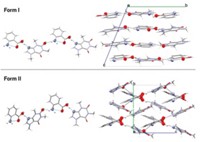Advertisement
Grab your lab coat. Let's get started
Welcome!
Welcome!
Create an account below to get 6 C&EN articles per month, receive newsletters and more - all free.
It seems this is your first time logging in online. Please enter the following information to continue.
As an ACS member you automatically get access to this site. All we need is few more details to create your reading experience.
Not you? Sign in with a different account.
Not you? Sign in with a different account.
ERROR 1
ERROR 1
ERROR 2
ERROR 2
ERROR 2
ERROR 2
ERROR 2
Password and Confirm password must match.
If you have an ACS member number, please enter it here so we can link this account to your membership. (optional)
ERROR 2
ACS values your privacy. By submitting your information, you are gaining access to C&EN and subscribing to our weekly newsletter. We use the information you provide to make your reading experience better, and we will never sell your data to third party members.
Environment
Probability Breakdown
June 15, 2009
| A version of this story appeared in
Volume 87, Issue 24
The article "Hand over Hand" (C&EN, March 23, page 38) prompts us to make readers aware of work on Cylert (pemoline) carried out at Abbott Laboratories and presented in 1999 ("Spontaneous resolution and interconversion of enantiomers in 2-imino-5-phenyl-4-oxazolidinone [pemoline]," Book of Abstracts. Bonk, Peter J., et al. 22-26, 1999, ORGN-538).
We made up a relatively large batch of pemoline, and after the reaction was essentially complete as determined by high-performance liquid chromatography, and prior to the start of crystallization, the large batch was split into six separate flasks. After crystallization, each flask yielded a significantly different enantiomeric ratio, some with an excess of the (+) enantiomer and some with an excess of the (-) enantiomer.
The criteria for the behavior we observed were delineated 55 years ago by Egbert Havinga (Biochim. Biophys. Acta 1954, 13, 171), who included examples he uncovered over several years of observation in the 1940s. At the core of the phenomena is a surprising breakdown of the "expected" 50:50 ratio of nucleation of the separate (R) and (S) crystals that make up the conglomerate solid. The initial imbalance to one enantiomer occurs only during the nucleation/crystallization process; the liquors are always spot-on racemic.
Although not explicitly discussed in our poster, the implications to "life's single chirality" are obvious. I recently presented the data in a seminar at both Clemson University and Florida Institute of Technology. A manuscript to be submitted to Organic Process Research & Development is in final preparation and will make our observations, data, and results more readily accessible.
Peter J. Bonk
Westerly, R.I.
More Latest News
October 28, 2011
Speedy Homemade-Explosive Detector
Forensic Chemistry: A new method could increase the number of explosives detected by airport screeners.
Solar Panel Makers Cry Foul
Trade: U.S. companies complain of market dumping by China.
Novartis To Cut 2,000 Jobs
Layoffs follow similar moves by Amgen, AstraZeneca.
Nations Break Impasse On Waste
Environment: Ban to halt export of hazardous waste to developing world.
New Leader For Lawrence Livermore
Penrose (Parney) Albright will direct DOE national lab.
Hair Reveals Source Of People's Exposure To Mercury
Toxic Exposure: Mercury isotopes in human hair illuminate dietary and industrial sources.
Why The Long Fat?
Cancer Biochemistry: Mass spectrometry follows the metabolism of very long fatty acids in cancer cells.



Join the conversation
Contact the reporter
Submit a Letter to the Editor for publication
Engage with us on Twitter